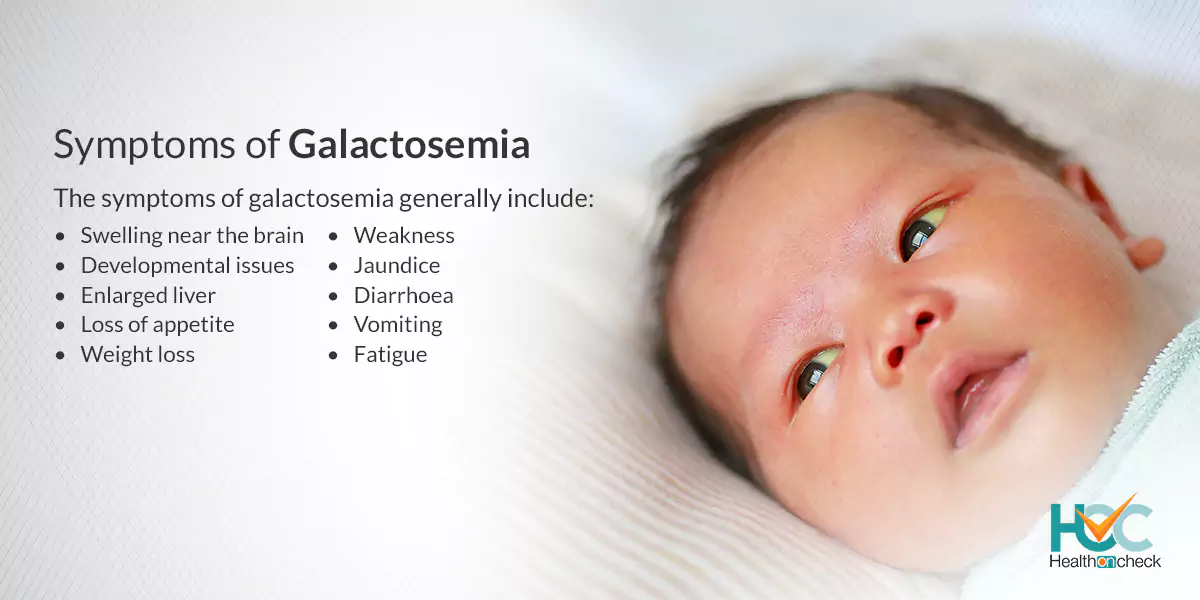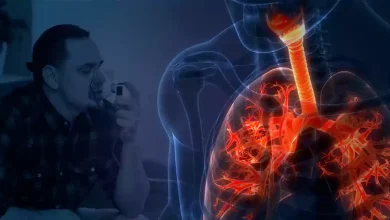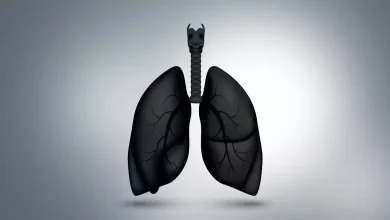What is Galactosemia?

What is Galactosemia?
Galactosemia is an inherited metabolic disorder where your body is unable to process a sugar known as galactose. Galactosemia might be a problem for infants due to galactose being present in both breast milk and most baby formulas. Breast milk is full of important things that are required such as key nutrients, antibodies, and hormones and these things shield them from disease along with keeping them healthy. It’s vital to diagnose the disease early to avert any complications from the disease, which can be serious and even fatal if left untreated. Most hospitals screen for this condition at birth. With early diagnosis and a lactose-restricted diet, people with this condition can lead relatively normal lives.
What are the Types of Galactosemia?
There are four types of galactosemia including:
– Type I (Classic)
The classic version of galactosemia, which is known as type I, is the most common and also the most serious. Type I occurs when the GALT gene mutates. The function of this gene is to produce the enzymes that break down galactose into glucose and other molecules that fulfill your body’s energy requirement. The type I gene mutation fundamentally eradicates this function of the enzyme activity, causing your body not able to process galactose at all. This results in galactose accumulating rapidly in your body.
– Type II (Galactokinase deficiency)
This type occurs due to a mutation of the GALK1 gene. The function of this gene is to produce enzymes that play a substantiating role in galactose metabolism. The health problems caused by type II are less than the classic type. The main risk from type II is that you might develop cataracts.
– Type III (Galactose epimerase deficiency)
The GALE gene, which makes enzymes play a supportive role in galactose metabolism, leads to type III galactosemia. In due course, the deficiency of these important enzymes results in the accumulation of galactose in your body. Type III can show mild or severe symptoms. The more severe version of this type can cause a lot more serious complications of classic galactosemia, such as developmental delays, cataracts, intellectual disabilities, kidney problems, and liver disease.
– Duarte galactosemia
Duarte galactosemia because of mutations in the GALT gene, which also causes classic galactosemia. This type of galactosemia is simply a less severe mutation. It decreases but doesn’t remove the vital enzyme function that results in metabolising galactose. People with this type might have a few digestive difficulties from foods with galactose, but they don’t face the same medical complications. They don’t have to necessarily avoid galactose in their diet.
What are the Symptoms of Galactosemia?
The symptoms of galactosemia generally include:
– Loss of appetite.
– Fatigue.
– Vomiting.
– Diarrhoea.
– Weight loss.
– Weakness.
– Developmental issues.
– Jaundice.
– Enlarged liver.
– Abdominal swelling with fluid.
– Swelling near the brain.
What are the Causes of Galactosemia?
Galactosemia occurs due to a gene mutation. It’s inherited from both parents and each parent contributes one copy of the mutated gene but till both copies of their galactosemia genes are mutated, the parents usually don’t show symptoms of the condition themselves, so symptoms in their baby might be a surprise. The enzymes necessary to break down galactose for energy do not happen because the mutated gene fails to produce them. It results in chemical products of galactose being accumulated in your body. Three various genes that might be mutated are involved in this process and each corresponds to a different type of galactosemia.
What are the Risk Factors for Galactosemia?
The main risk factor for galactosemia is both parents being carriers of the gene for galactosemia. The highest risk factor of being born with galactosemia is inheriting one gene from each parent
If galactosemia isn’t diagnosed and treated right away then multiple complications might occur. The buildup of galactose in the blood can be serious and if prompt diagnosis and intervention do not happen then galactosemia can be fatal in newborns.
What are the Complications of Galactosemia?
The complications of galactosemia include:
– Liver damage or failure
– Serious bacterial infections
– Sepsis, a life-threatening complication caused because of infections
– Shock
– Development problems in children
– Behavioural issues
– Cataracts
– Tremors
– Speech delays and problems
– Learning problems
– Fine motor difficulties
– Low bone mineral density
– Reproductive issues
– Premature ovarian insufficiency
– Premature ovarian insufficiency in women
How Galactosemia is Diagnosed?
Most modern hospitals nowadays carry out standard procedures to screen newborn babies for a list of disorders such as classic galactosemia that can lead to significant damage before the occurrence of symptoms. Sometimes it’s called the PKU test, which can diagnose phenylketonuria, another condition this test can find out. The screening is carried out by pricking your baby’s heel and taking a sample of some blood, generally about 24 hours after the birth. The blood test will show decreased GALT enzyme activity in their blood if your child has galactosemia. Genetic testing is followed next to detect the type of galactosemia your child is having.
What are the Treatment Options Available for Galactosemia?
Eliminating galactose from the diet is the only known way to treat galactosemia. Galactose is a component of lactose, so it actually means avoiding dairy products. Newborns are mostly given a soy-based or elemental formula. Children and adults might be required to supplement their calcium and vitamin D intake to make up for the lack of dairy products in their diet. Supplementing calcium and vitamin D is helpful to maintain bone density.
Some children might require additional care and support with learning and development while growing up which might include:
– Speech therapy.
– Occupational therapy.
– Behavioural therapy.
– Targeted learning plans.
– Hormone therapy might be needed for teenagers to induce puberty and menstruation.
Living with Galactosemia
For anyone living with galactosemia, maintaining a galactose-free diet is the main goal of the treatment and it takes discipline. Many adults benefit from joining communities where they can discuss and share their issues with other inmates with the same condition. If your newborn is diagnosed with galactosemia, you might feel many emotions, such as fear, shock, anticipation, and overwhelm. Galactosemia usually comes as a surprise, particularly when you have no known family history of this condition. Proper information about this health condition is relatively low even among medical professionals, in part because it is quite rare. With early diagnosis and proper treatment, the worst effects of galactosemia can be avoided. Adults with this disease might need to visit their doctors more often to keep the condition in control.
Whom to Consult?
Galactosemia is rare, but it can be predicted with genetic screening. In case you are pregnant or planning to conceive, then prenatal testing can tell you if you or your partner carry the genes that cause galactosemia which you may transfer to your child though the chance of passing it on to your child is 25% if both of you have the gene. If your child has galactosemia, then it is usually diagnosed during the screening test done after a baby is born. You should discuss and make a treatment plan for your child to remove any complications of this condition.





